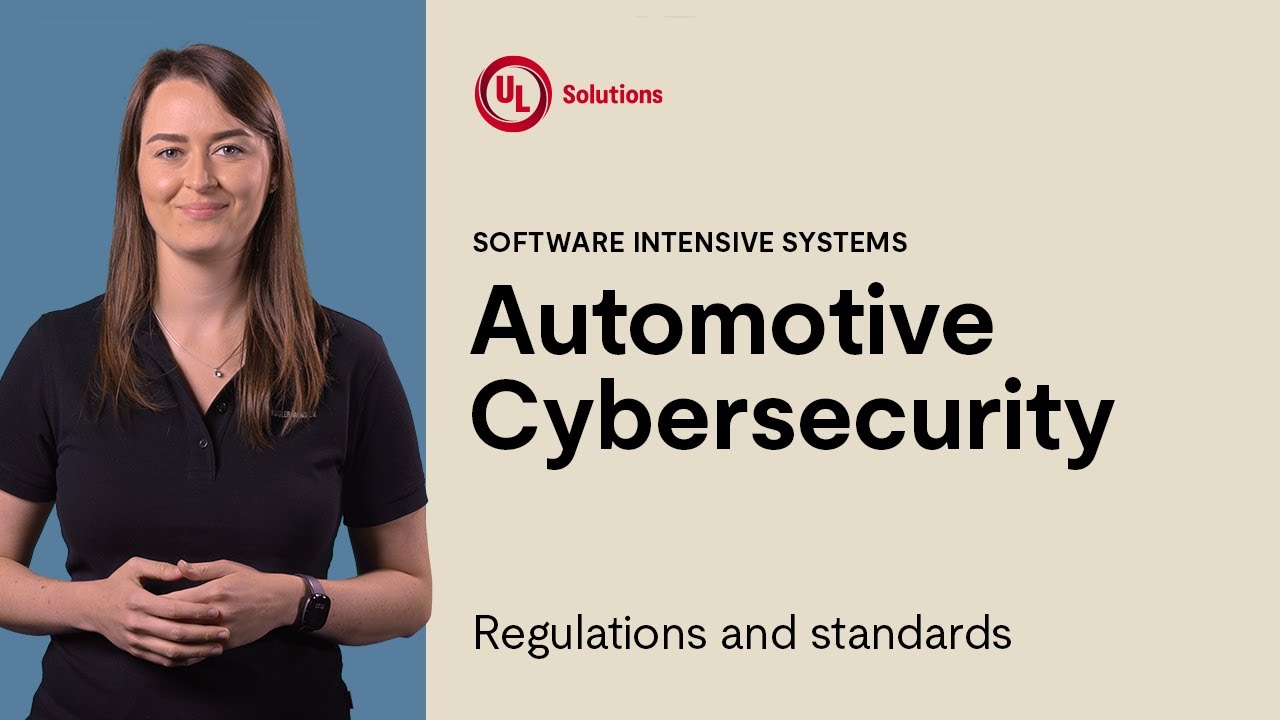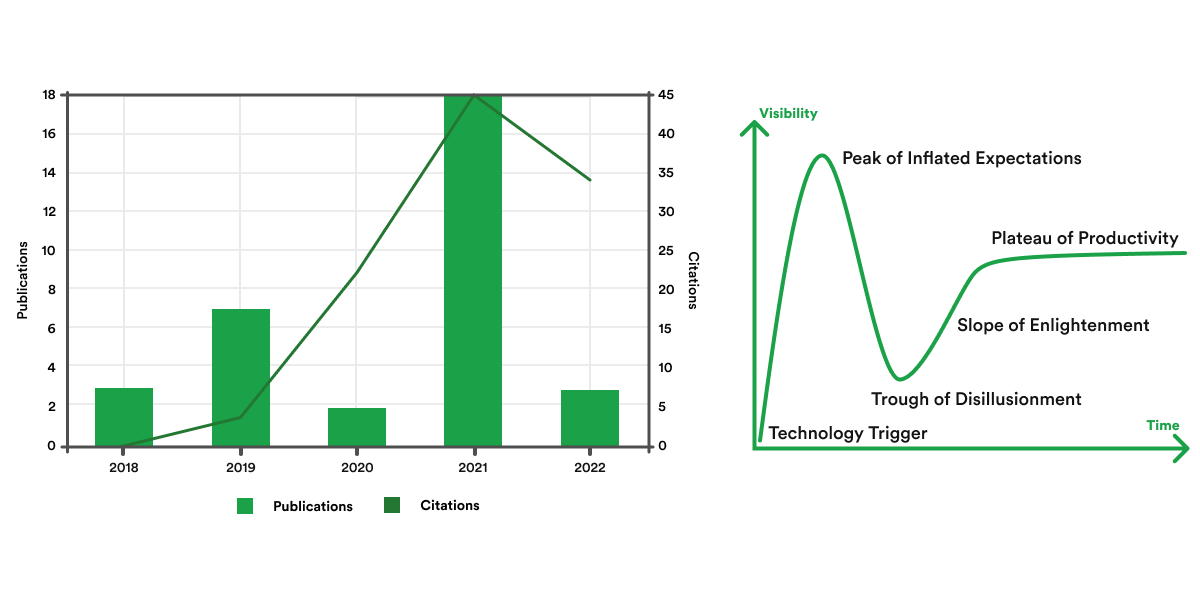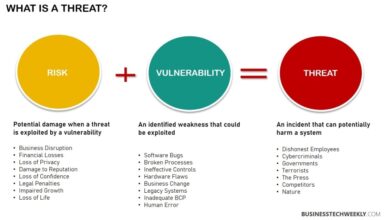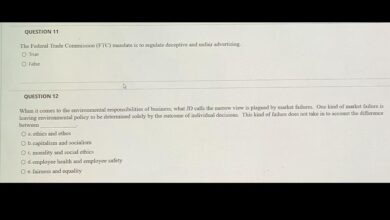
What New EU Cybersecurity Rules Mean for Carmakers
What new EU cybersecurity rules mean for carmakers is a question shaking up the automotive industry. These new regulations aren’t just about adding a few extra lines of code; they represent a fundamental shift in how we design, manufacture, and maintain connected vehicles. Suddenly, data privacy, supply chain security, and over-the-air updates are front and center, forcing carmakers to rethink their entire approach to vehicle security.
Get ready for a deep dive into the changes, the challenges, and the opportunities this new era presents.
The EU’s updated cybersecurity rules are far-reaching, impacting everything from the design of individual components to the management of massive software updates across millions of vehicles. We’ll explore the specific vulnerabilities these rules target, the increased responsibility placed on suppliers, and the rigorous testing and certification processes now required. We’ll also look at the potential economic impacts and how these changes might reshape the competitive landscape of the European automotive market.
Buckle up, it’s going to be a ride!
Impact on Vehicle Cybersecurity
The new EU cybersecurity rules represent a significant shift in the automotive landscape, demanding a fundamental re-evaluation of how carmakers design, manufacture, and maintain their vehicles, especially those with connected features. These regulations aren’t just about adding a few extra security measures; they’re about building a fundamentally more secure automotive ecosystem, protecting both drivers and the wider infrastructure.Increased cybersecurity requirements for connected car systems are at the heart of these new rules.
The days of relatively lax security practices are over. Manufacturers are now obligated to implement robust security measures throughout the entire vehicle lifecycle, from design and development to deployment and post-market updates. This includes comprehensive threat modeling, vulnerability assessments, and regular security audits. The aim is to minimize the risk of cyberattacks targeting critical vehicle functions, protecting drivers from potential harm and ensuring the integrity of the vehicle’s systems.
Data Protection and Privacy Implications
The EU rules also place a strong emphasis on data protection and privacy within vehicles. Connected cars generate vast amounts of data about driver behavior, vehicle performance, and location. These regulations mandate that carmakers implement strict data governance policies, ensuring the responsible collection, processing, and storage of this sensitive information. Transparency is key; drivers must be informed about what data is being collected, how it’s being used, and with whom it’s being shared.
Failure to comply could result in significant fines and reputational damage. This goes beyond simply adhering to GDPR; it demands a proactive and transparent approach to data handling within the vehicle itself.
Vulnerabilities Addressed by the New Rules
The new regulations specifically target several key vulnerabilities commonly found in connected car systems. For example, they address weaknesses in over-the-air (OTA) update mechanisms, which can be exploited to install malicious software. They also focus on securing vehicle communication interfaces, such as CAN bus, which could be manipulated to compromise critical vehicle functions like braking or steering. Furthermore, the rules aim to prevent unauthorized access to in-vehicle infotainment systems and other connected services, which could lead to data breaches or the installation of malware.
Finally, the rules address the vulnerability of relying on single points of failure in the vehicle’s security architecture. The focus is now on creating layered and redundant security mechanisms to enhance resilience against attacks.
Comparison of Pre- and Post-Regulation Cybersecurity Standards
| Aspect | Pre-Regulation | Post-Regulation |
|---|---|---|
| OTA Update Security | Often lacked robust authentication and integrity checks; vulnerabilities were common. | Mandatory implementation of secure boot processes, digital signatures, and rigorous vulnerability management for OTA updates. |
| Data Protection | Data collection and usage practices often lacked transparency and adequate security controls. | Strict adherence to data protection regulations (GDPR and similar), including data minimization, purpose limitation, and robust security measures. |
| Vulnerability Management | Often reactive; vulnerabilities were discovered and addressed after exploitation. | Proactive vulnerability identification and mitigation through threat modeling, penetration testing, and regular security audits. |
| Incident Response | Inconsistent and often inadequate; lacked standardized procedures. | Mandatory implementation of robust incident response plans, including procedures for detection, containment, and remediation of security incidents. |
Supply Chain Security and Compliance
The new EU cybersecurity regulations represent a seismic shift for carmakers, extending far beyond the vehicle itself. Successfully navigating these rules necessitates a comprehensive overhaul of how they manage their supply chains, demanding a proactive and deeply integrated approach to cybersecurity from design to deployment. The interconnected nature of modern vehicles means a single vulnerable component can compromise the entire system, highlighting the critical need for robust supply chain security.The sheer complexity of the automotive supply chain presents significant challenges.
Carmakers rely on hundreds, even thousands, of suppliers, each with its own cybersecurity practices (or lack thereof). Tracing vulnerabilities and ensuring consistent security standards across this vast network is a monumental task. Furthermore, the globalized nature of the automotive industry adds another layer of complexity, with suppliers located across different jurisdictions and subject to varying regulatory landscapes.
This necessitates a standardized, globally-consistent approach to cybersecurity risk management.
Supplier Responsibilities Under New EU Regulations
The new regulations place significant responsibilities on component suppliers. They are no longer simply providing parts; they are now integral players in the overall cybersecurity posture of the finished vehicle. Suppliers are expected to implement robust cybersecurity measures throughout their own operations, including design, development, manufacturing, and distribution. This includes adhering to specific security standards, conducting regular security assessments, and implementing incident response plans.
Failure to comply can lead to significant penalties, impacting both the supplier and the carmaker. For instance, a supplier’s failure to secure its software development process could result in vulnerabilities being introduced into the vehicle’s software, potentially leading to recalls and reputational damage for both the supplier and the original equipment manufacturer (OEM).
Best Practices for Managing Cybersecurity Risks Within Supply Chains
Effective supply chain security requires a multi-faceted approach. This starts with a thorough risk assessment, identifying potential vulnerabilities throughout the entire supply chain. This assessment should consider not only the technical aspects of security but also the organizational and human factors. Next, carmakers need to establish clear cybersecurity requirements for their suppliers, incorporating these requirements into contracts and supplier agreements.
Regular audits and monitoring are essential to ensure compliance and identify any emerging threats. Finally, fostering a culture of cybersecurity awareness and collaboration throughout the supply chain is crucial. This includes providing training to suppliers on best practices and establishing clear communication channels for reporting and addressing security incidents. Open communication and collaboration are vital for mitigating risks effectively.
Consider, for example, a scenario where a supplier discovers a vulnerability. Rapid and transparent communication with the carmaker allows for prompt remediation, minimizing potential damage.
Key Steps for Achieving Supply Chain Compliance
Successfully navigating the new EU regulations demands a structured approach. Carmakers should prioritize the following steps:
- Develop a comprehensive cybersecurity policy that clearly defines roles, responsibilities, and processes.
- Conduct thorough risk assessments of the entire supply chain, identifying potential vulnerabilities and prioritizing mitigation efforts.
- Establish clear cybersecurity requirements for suppliers, including specific security standards and compliance certifications.
- Implement robust supplier selection and onboarding processes, including thorough due diligence and security assessments of potential suppliers.
- Regularly audit suppliers to ensure compliance with established cybersecurity requirements.
- Establish clear communication channels for reporting and addressing security incidents.
- Invest in cybersecurity training and awareness programs for both internal teams and suppliers.
- Develop and implement an incident response plan to effectively manage and mitigate cybersecurity incidents.
- Maintain up-to-date documentation of all cybersecurity policies, procedures, and assessments.
- Continuously monitor the evolving threat landscape and adapt cybersecurity strategies accordingly.
Software Updates and Vulnerability Management
The new EU cybersecurity rules represent a significant shift in how car manufacturers approach software updates and vulnerability management. No longer is it sufficient to simply release a new car model with its built-in software; ongoing maintenance and security patching are now a legally mandated aspect of vehicle lifecycle management. This necessitates a robust and proactive approach to identifying, addressing, and mitigating potential security risks throughout the vehicle’s lifespan.The regulations introduce stringent requirements for the timely delivery of software updates to address known vulnerabilities and ensure the ongoing security of vehicles.
These updates aren’t just about adding new features; they are crucial for patching security flaws that could be exploited by malicious actors to compromise vehicle systems, potentially leading to safety hazards, data breaches, or even complete vehicle control compromise. This heightened emphasis on post-market security is a game-changer for the automotive industry.
Over-the-Air (OTA) Update Requirements and Security Implications
The new rules strongly encourage, and in some cases mandate, the use of Over-the-Air (OTA) updates for delivering security patches and software enhancements. OTA updates offer several advantages, including convenience for the vehicle owner and the ability to deploy fixes quickly and efficiently to a large number of vehicles. However, the security of the OTA update mechanism itself is paramount.
A compromised OTA system could allow attackers to deploy malicious updates, potentially causing widespread damage.Several approaches exist for secure OTA updates. One common method involves using digital signatures to verify the authenticity and integrity of updates. This ensures that only legitimate updates from the manufacturer are installed. Another important aspect is secure communication channels, such as encrypted connections, to prevent eavesdropping and tampering during the update process.
Finally, robust authentication mechanisms are necessary to verify the identity of the vehicle requesting the update and prevent unauthorized updates. The choice of OTA approach directly impacts the overall security posture of the vehicle and must be carefully considered in light of the new regulations. Failure to implement secure OTA procedures could lead to significant penalties under the new rules.
Vulnerability Reporting and Remediation Process
The EU regulations establish a clear process for reporting and addressing cybersecurity vulnerabilities discovered in vehicles. This process typically involves a coordinated effort between the vehicle manufacturer, cybersecurity researchers, and potentially regulatory authorities. Manufacturers are required to establish a dedicated vulnerability reporting program, providing clear channels for responsible disclosure of security flaws. This typically includes a secure submission process, a clear timeline for acknowledging reports, and a commitment to timely remediation.Upon receiving a vulnerability report, manufacturers must conduct a thorough assessment to determine the severity of the vulnerability and its potential impact.
This assessment should consider factors such as the ease of exploitation, the potential consequences of successful exploitation, and the number of vehicles affected. Based on this assessment, the manufacturer will prioritize the development and deployment of a fix. The entire process, from initial report to deployment of the patch, must adhere to pre-defined timelines Artikeld in the regulations, and transparency is key.
Failure to comply with these requirements can result in significant fines.
Timeline for Software Updates and Vulnerability Remediation
The specific timelines for software updates and vulnerability remediation will vary depending on the severity of the vulnerability and the complexity of the fix. However, the new EU regulations set expectations for timely responses. The following table illustrates a possible timeline, recognizing that actual times may vary based on specific circumstances:
| Severity | Acknowledgement | Analysis/Fix Development | Deployment |
|---|---|---|---|
| Critical (Immediate Safety Risk) | Within 24 hours | Within 7 days | Within 30 days |
| High (Significant Security Risk) | Within 48 hours | Within 14 days | Within 60 days |
| Medium (Moderate Security Risk) | Within 72 hours | Within 30 days | Within 90 days |
| Low (Minor Security Risk) | Within 7 days | Within 60 days | Within 120 days |
Note: This table provides a general example. Actual timelines may vary depending on the specific vulnerability, the manufacturer’s capabilities, and other relevant factors. The new regulations emphasize a risk-based approach, prioritizing the remediation of critical vulnerabilities.
Certification and Testing Procedures: What New Eu Cybersecurity Rules Mean For Carmakers
The new EU cybersecurity rules for carmakers introduce a rigorous certification and testing process designed to ensure vehicles meet stringent security standards. This process involves a multi-stage approach, incorporating both internal testing by manufacturers and independent verification by accredited third-party assessors. The goal is to build trust in the cybersecurity of vehicles and protect consumers from potential vulnerabilities.The certification process is not a simple tick-box exercise.
It requires a comprehensive understanding of the vehicle’s architecture, software, and communication protocols. Carmakers must demonstrate robust security measures throughout the entire vehicle lifecycle, from design and development to production and post-market updates. This includes establishing secure software development practices, implementing effective vulnerability management processes, and regularly testing the vehicle’s resilience against various cyber threats.
Third-Party Assessor Role in Verification
Independent third-party assessors play a crucial role in verifying the cybersecurity compliance of carmakers. These assessors, accredited by designated EU bodies, conduct independent audits and penetration testing to validate the manufacturer’s claims. They examine the carmaker’s security processes, evaluate the effectiveness of implemented security measures, and assess the vehicle’s resilience against attacks. Their impartial assessment provides an objective verification of compliance, bolstering consumer confidence.
This independent verification is critical because it provides an external check on the manufacturer’s self-assessment, ensuring that the claimed security levels are actually achieved. The assessors utilize established testing methodologies and penetration testing techniques to thoroughly evaluate the vehicle’s security posture.
Consequences of Non-Compliance
Non-compliance with the new EU cybersecurity regulations can have significant consequences for carmakers. These consequences range from financial penalties to reputational damage and even potential legal action. The EU may impose substantial fines on manufacturers that fail to meet the required standards. Furthermore, non-compliance can severely damage a carmaker’s reputation, leading to loss of consumer trust and reduced sales.
In extreme cases, non-compliant vehicles might be recalled, resulting in substantial financial losses and operational disruptions. For example, a manufacturer failing to adequately address a critical vulnerability discovered during third-party assessment could face hefty fines and a product recall, severely impacting its bottom line and public image. The specific penalties will vary depending on the severity and nature of the non-compliance.
Certification Process Flowchart
The certification process can be visualized as a flowchart:[Imagine a flowchart here. The flowchart would begin with “Application for Certification” leading to “Internal Security Assessment by Manufacturer.” This would branch to “Vulnerability Remediation” (looping back to “Internal Security Assessment” if needed) and “Documentation Preparation.” These two paths would converge to “Submission of Documentation to Third-Party Assessor.” This would lead to “Independent Assessment and Penetration Testing by Third-Party Assessor.” This would branch to “Certification Granted” or “Non-Compliance/Remediation Required” (looping back to “Vulnerability Remediation” or “Documentation Preparation” as needed).
Finally, the process concludes with “Market Authorization”.]The flowchart illustrates the iterative nature of the process, highlighting the importance of continuous improvement and proactive vulnerability management. The involvement of independent assessors ensures objectivity and transparency throughout the process.
Data Breach Notification and Response

The new EU cybersecurity rules significantly impact how car manufacturers handle data breaches. These regulations demand a proactive and transparent approach, shifting the focus from reactive damage control to preventative measures and swift, effective responses. Failure to comply can result in substantial fines and reputational damage, highlighting the critical need for robust data breach response plans.
The regulations mandate specific procedures for notifying both authorities and affected individuals in the event of a data breach. This includes clearly defining what constitutes a breach, establishing timelines for notification, and outlining the information that must be included in those notifications. Furthermore, the rules emphasize the importance of having a comprehensive incident response plan in place, capable of minimizing the impact of a breach and restoring systems quickly and securely.
This plan must cover all aspects of the response, from initial detection and containment to recovery and post-incident analysis.
Notification Requirements for Authorities and Affected Individuals
Data breach notification requirements under the new EU cybersecurity rules are stringent. Carmakers must notify the relevant data protection authority within 72 hours of becoming aware of a breach, provided the breach is likely to result in a high risk to the rights and freedoms of individuals. This notification must include details of the breach, the number of individuals affected, the types of data compromised, and the measures taken to mitigate the impact.
Simultaneously, affected individuals must also be informed, unless the breach poses no risk to their rights and freedoms. The notification to individuals should clearly explain the nature of the breach, the type of data affected, and the steps being taken to address the situation. Failure to meet these tight deadlines can lead to severe penalties.
Importance of a Robust Incident Response Plan, What new eu cybersecurity rules mean for carmakers
A robust incident response plan is crucial for mitigating the damage caused by a data breach. Such a plan should Artikel clear roles and responsibilities, establish communication protocols, and detail procedures for containing the breach, investigating its cause, and restoring affected systems. Regular testing and updating of the plan are essential to ensure its effectiveness. A well-defined plan can help limit the financial and reputational consequences of a breach, demonstrating to regulators and customers a commitment to data security.
For example, a car manufacturer might include steps for isolating compromised vehicles from the network, patching vulnerabilities, and conducting a forensic investigation to determine the root cause and extent of the breach.
Penalties for Non-Compliance
Non-compliance with data breach notification requirements can result in significant penalties. Fines can reach millions of euros, depending on the severity of the breach and the extent of non-compliance. Furthermore, reputational damage can be substantial, leading to loss of customer trust and potential legal action. These penalties underscore the importance of prioritizing data security and investing in robust systems and procedures to prevent and manage data breaches.
The specific penalties will vary based on factors such as the number of individuals affected, the sensitivity of the data compromised, and the carmaker’s proactive measures in addressing the breach.
Sample Data Breach Notification Template for Carmakers
A sample data breach notification template should be tailored to the specific circumstances of each breach, but should generally include the following information:
To: [Affected Individual’s Name]
From: [Car Manufacturer’s Name]
Date: [Date]
Subject: Important Information Regarding a Data Security Incident
Dear [Affected Individual’s Name],
We are writing to inform you of a recent data security incident that may have involved some of your personal information. On [Date], we discovered [Brief description of the incident]. [Description of the types of personal information potentially affected]. We have taken steps to contain the incident and prevent further unauthorized access. [Description of steps taken].
We are cooperating with relevant authorities and are committed to protecting your information. [Information on credit monitoring or identity theft protection services offered]. For further information, please contact us at [Phone number] or [Email address].
Sincerely,
[Car Manufacturer’s Name]
Economic and Competitive Implications
The new EU cybersecurity regulations for automobiles will undoubtedly reshape the automotive landscape, impacting not only individual manufacturers but also the competitive dynamics of the entire European car market. The financial implications are significant, demanding substantial investments in new technologies, processes, and personnel. This will lead to a redistribution of resources and potentially alter the competitive hierarchy.The costs of compliance will vary considerably across different car manufacturers.
Larger, established manufacturers with more extensive resources are likely to find the transition smoother, though still costly. Smaller manufacturers and startups, however, may face disproportionately higher burdens, potentially hindering their growth and competitiveness. The investment required for robust cybersecurity systems, employee training, and certification processes will be a considerable expense, particularly for companies with less established infrastructure. This disparity could lead to a consolidation of the market, with larger players better positioned to absorb these costs.
Compliance Costs Across Manufacturers
The cost of compliance will be influenced by several factors, including the manufacturer’s current cybersecurity infrastructure, the complexity of their vehicle systems, and their existing supply chain relationships. Established players with pre-existing cybersecurity programs may face lower incremental costs compared to those starting from scratch. For example, a manufacturer with a strong existing software development lifecycle (SDLC) incorporating security best practices will likely need less extensive re-engineering than a manufacturer with a less mature process.
The complexity of the vehicle’s architecture – the number of interconnected systems and the sophistication of their software – will also dictate the scale of investment needed. Manufacturers relying on a complex, globally dispersed supply chain will also face challenges in ensuring consistent cybersecurity practices across all tiers of their suppliers. This necessitates a significant investment in supply chain risk management and oversight.
Impact on Competition in the European Car Market
The new regulations could significantly alter the competitive landscape of the European car market. Manufacturers that successfully and efficiently integrate robust cybersecurity measures into their design, production, and post-market processes will gain a competitive advantage. This improved cybersecurity will translate to enhanced brand reputation, potentially attracting consumers who increasingly value data security and privacy. Conversely, manufacturers struggling to meet the new standards could face reputational damage, legal repercussions, and decreased market share.
This could lead to a scenario where only the most financially resilient and technologically advanced manufacturers thrive, potentially leading to market consolidation.
Benefits of Improved Cybersecurity for Carmakers
While compliance represents a significant cost, the long-term benefits of improved cybersecurity are substantial. Reduced risk of data breaches translates directly into cost savings by mitigating the financial and reputational damage associated with such events. Furthermore, improved cybersecurity can lead to increased consumer trust and brand loyalty, ultimately driving sales. The ability to offer secure and reliable connected car services will also create new revenue streams and opportunities for innovation.
For example, a manufacturer with a proven track record of robust cybersecurity can leverage this as a key selling point, attracting customers who prioritize data security in their vehicle choices. This translates to a competitive advantage in a market increasingly focused on connected car features and services.
Consumer Trust and Perception

The new EU cybersecurity rules for connected cars are not just about technical specifications; they’re fundamentally about rebuilding consumer trust in a rapidly evolving technology. The ability of car manufacturers to demonstrate robust cybersecurity measures will directly impact consumer confidence and, ultimately, purchasing decisions. These regulations aim to create a safer digital environment within vehicles, addressing concerns about data breaches, hacking, and unauthorized access.The new rules aim to build consumer trust by establishing clear standards and accountability for car manufacturers.
By mandating specific cybersecurity measures, such as regular software updates, vulnerability management programs, and robust data breach notification procedures, the EU aims to reduce the risk of cyberattacks and data breaches. This increased transparency and demonstrable commitment to security should alleviate consumer anxieties about the safety and privacy of their personal data within their vehicles.
Impact on Consumer Purchasing Decisions
Consumers are increasingly aware of cybersecurity risks, and these concerns are significantly influencing their purchasing decisions. Studies show a growing preference for brands that prioritize data privacy and security. The new EU rules will likely further amplify this trend. Consumers will be more inclined to choose vehicles from manufacturers who openly demonstrate their commitment to meeting these stringent regulations, viewing compliance as a strong indicator of vehicle reliability and trustworthiness.
Conversely, manufacturers failing to meet these standards could face a significant competitive disadvantage, losing market share to more security-conscious competitors. For example, a recent survey showed that 70% of potential car buyers would be less likely to purchase a vehicle from a manufacturer known to have experienced a significant data breach related to its connected car systems.
Communicating Cybersecurity Efforts to Consumers
Effective communication is crucial for carmakers to translate their cybersecurity efforts into tangible consumer trust. Simply stating compliance with regulations is insufficient. Manufacturers need to actively communicate their proactive security measures in clear, concise, and accessible language. This includes highlighting features like over-the-air updates, encryption protocols, intrusion detection systems, and the processes in place for handling data breaches.
Transparency regarding data collection practices and how consumer data is protected is also paramount. Marketing campaigns should focus on the tangible benefits of robust cybersecurity, emphasizing peace of mind and the protection of personal information. For example, a manufacturer could create a dedicated webpage outlining its cybersecurity strategy, including independent third-party audits and certifications.
Hypothetical Scenario Demonstrating Enhanced Consumer Trust
Imagine two comparable electric vehicles, one from Manufacturer A and one from Manufacturer B. Both vehicles offer similar features and pricing. However, Manufacturer A proactively communicates its rigorous cybersecurity measures, including details about its vulnerability disclosure program and its independent security audits. Manufacturer B, on the other hand, provides minimal information about its cybersecurity practices. In this scenario, the consumer is more likely to choose Manufacturer A’s vehicle, perceiving it as the safer and more trustworthy option, even if the underlying security of both vehicles is similar.
The transparent communication by Manufacturer A builds confidence and significantly influences the purchasing decision, demonstrating the power of effective communication in fostering consumer trust in vehicle cybersecurity.
Final Wrap-Up

The new EU cybersecurity rules for carmakers are undeniably transformative. While the costs of compliance might initially seem daunting, the long-term benefits—enhanced consumer trust, reduced liability risks, and a more resilient automotive ecosystem—are undeniable. This isn’t just about ticking regulatory boxes; it’s about building a future where connected cars are not just convenient but fundamentally secure. The journey towards compliance will be challenging, but the destination—a safer and more trustworthy automotive landscape—is worth the effort.
Let’s see how the industry rises to meet this challenge.
Commonly Asked Questions
What are the penalties for non-compliance with the new EU cybersecurity rules?
Penalties can be substantial, ranging from hefty fines to potential legal action from affected consumers. The exact penalties depend on the severity and nature of the non-compliance.
How will these new rules impact the price of new cars?
It’s likely that the increased costs associated with compliance will be passed on to consumers, resulting in slightly higher prices for new vehicles. The extent of the price increase will vary depending on the manufacturer and vehicle model.
Will older cars be affected by these new rules?
While the rules primarily target new vehicles, manufacturers may be required to implement updates and security measures for older models to mitigate existing vulnerabilities, although this is likely to be on a case-by-case basis and may not be mandated across the board.
What resources are available to help carmakers comply with the new regulations?
Several industry bodies and consulting firms offer guidance and support to help carmakers navigate the complexities of the new regulations. Additionally, the EU itself provides resources and information on its website.





